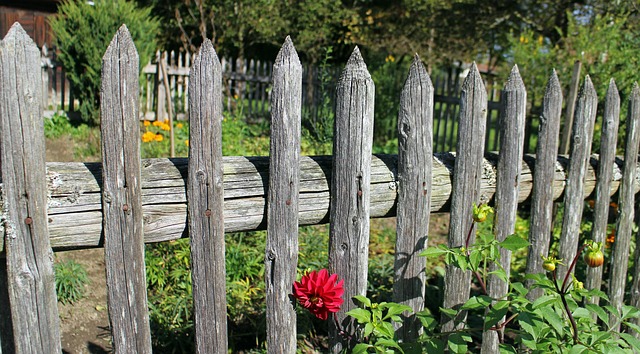For New Bedford, Massachusetts homeowners looking to enhance their outdoor spaces, installing a fence offers both functionality and aesthetic appeal. This DIY guide navigates the process, from selecting suitable fence options tailored to New Bedford’s unique yard considerations, to ensuring structural integrity through meticulous planning and material choice. By following expert tips on installation, fastening, and local regulations, homeowners can achieve a durable, beautiful fence that complements their property.
- Understanding Your Fence Options for New Bedford Yards
- Measuring and Planning for Successful DIY Installation
- Choosing the Right Materials for Durability and Aesthetics
- Step-by-Step Guide to Post Setting and Board Attaching
- Tips for Fastening, Securing, and Finishing Your Fence
- Local Regulations and Permits: What New Bedford Homeowners Need to Know
Understanding Your Fence Options for New Bedford Yards
When it comes to fencing your New Bedford, Massachusetts yard, the options are vast and varied. The first step is to consider the type of fence that best suits your space and needs. Privacy fences offer a sense of seclusion for your outdoor area while still allowing natural light to filter through. These are popular choices for homeowners looking to create a peaceful retreat in their backyards. On the other hand, picket fences offer both aesthetic appeal and security, making them ideal for families with children or pets who need a safe, enclosed space.
Chain-link fences are another option, known for their durability and affordability. These are often chosen for their practicality, especially in areas where security is a primary concern. Ultimately, the decision should align with your desired level of privacy, aesthetic preferences, and budget to ensure you achieve the perfect fence for your New Bedford yard.
Measuring and Planning for Successful DIY Installation
Before you start installing your fence, taking accurate measurements is crucial. Walk along the intended fence line, noting any curves or corners. Use a tape measure to record the distances, ensuring you cover every section, including gateways or entry points. This step is essential for purchasing the right amount of fencing material and planning cuts and fittings.
Plan your route carefully by considering the layout of your property and nearby structures. Check local regulations and building codes regarding fence installation, especially in residential areas. Marking out the fence line with string or spray paint can help visualize the final result and ensure a straight and uniform barrier when you begin construction.
Choosing the Right Materials for Durability and Aesthetics
When it comes to DIY fence installation, selecting the right materials is half the battle won. For New Bedford homeowners, opting for high-quality, durable options will ensure your fence stands the test of time and maintains a charming aesthetic. Consider the local climate and environmental factors; in a region with all four seasons, weather-resistant materials like treated wood or vinyl are ideal choices. Treated wood offers strength and longevity while requiring minimal maintenance, whereas vinyl fences are low-maintenance, color-durable, and can mimic the look of wood without the upkeep.
Aesthetically, choose materials that complement your home’s style. Modern homes may benefit from sleek, minimalist designs like rectangular pickets or flat panel fencing, while traditional homes could showcase a more ornate picket pattern or a charming wooden rail fence. Remember, the right materials will not only enhance your outdoor space but also increase your property’s value, making it an important investment for any New Bedford homeowner.
Step-by-Step Guide to Post Setting and Board Attaching
Setting posts and attaching boards is a crucial step in DIY fence installation. Start by marking the spots where your fence posts will go, ensuring they align with your design and local regulations. Dig holes for each post, making sure they are deep enough to provide stability (usually around one-third of the post’s height). Place the posts in the holes, level them up, and pack the soil back around them, compacting it gently.
For board attachment, measure and mark the positions for brackets or nails. Attach the boards securely using brackets or pre-drilled screws, ensuring they are level and evenly spaced. This step requires precision to maintain the fence’s integrity and aesthetic appeal.
Tips for Fastening, Securing, and Finishing Your Fence
When fastening your fence posts to the ground, it’s crucial to use high-quality concrete and follow proper placement techniques for a sturdy foundation. Dig deep enough holes—typically 1.5–2 feet—to accommodate the posts’ base, ensuring they’re level before filling with concrete. Allow ample time for the concrete to set completely, usually 24–48 hours, before proceeding.
For securing the fence panels, use galvanised or stainless-steel brackets and fasteners. These materials resist rust and corrosion, prolonging your fence’s lifespan. Space brackets evenly along the posts, following manufacturer guidelines for optimal support. Apply a coat of outdoor-grade sealant to protect the wood from elements while giving your fence a neat, finished look.
Local Regulations and Permits: What New Bedford Homeowners Need to Know
Before installing a fence, New Bedford homeowners must familiarize themselves with local regulations and permits. The city of New Bedford has specific guidelines regarding property boundaries, fence heights, materials, and installation methods to ensure safety, privacy, and aesthetic harmony within the community. Homeowners should check with the local building department or town clerk’s office to obtain relevant permits, which may vary based on the type, size, and location of the proposed fence. Understanding these regulations is crucial to avoid any legal issues or delays during the installation process.
Failure to comply with local laws can result in fines or the requirement to remove the fence. Homeowners should review building codes, zoning ordinances, and neighborhood association rules (if applicable) to ensure their fence project aligns with these requirements. It’s a good practice to consult with neighbors as well, especially if the fence will be shared or close to property lines, to foster positive relationships and maintain harmony within the neighborhood.
